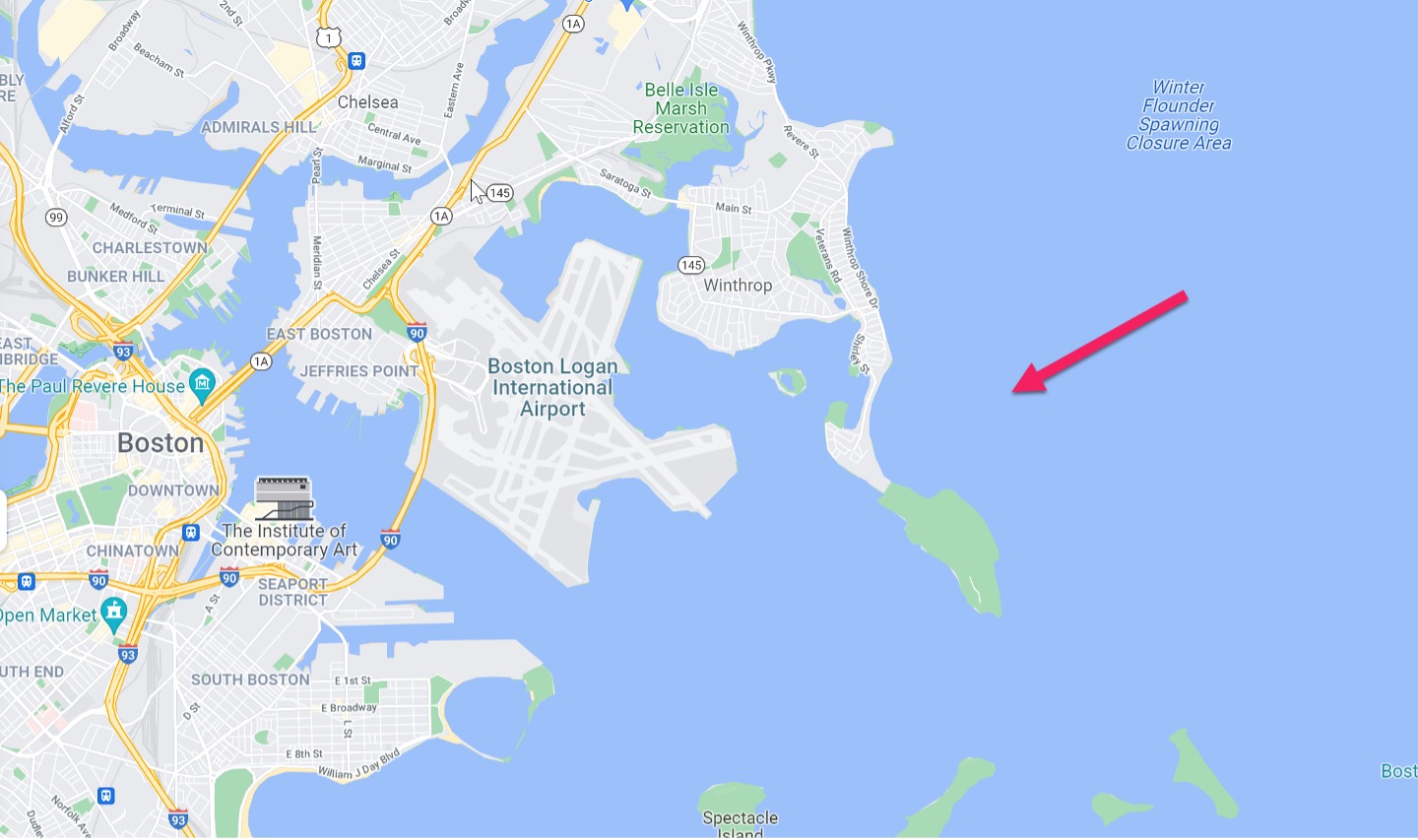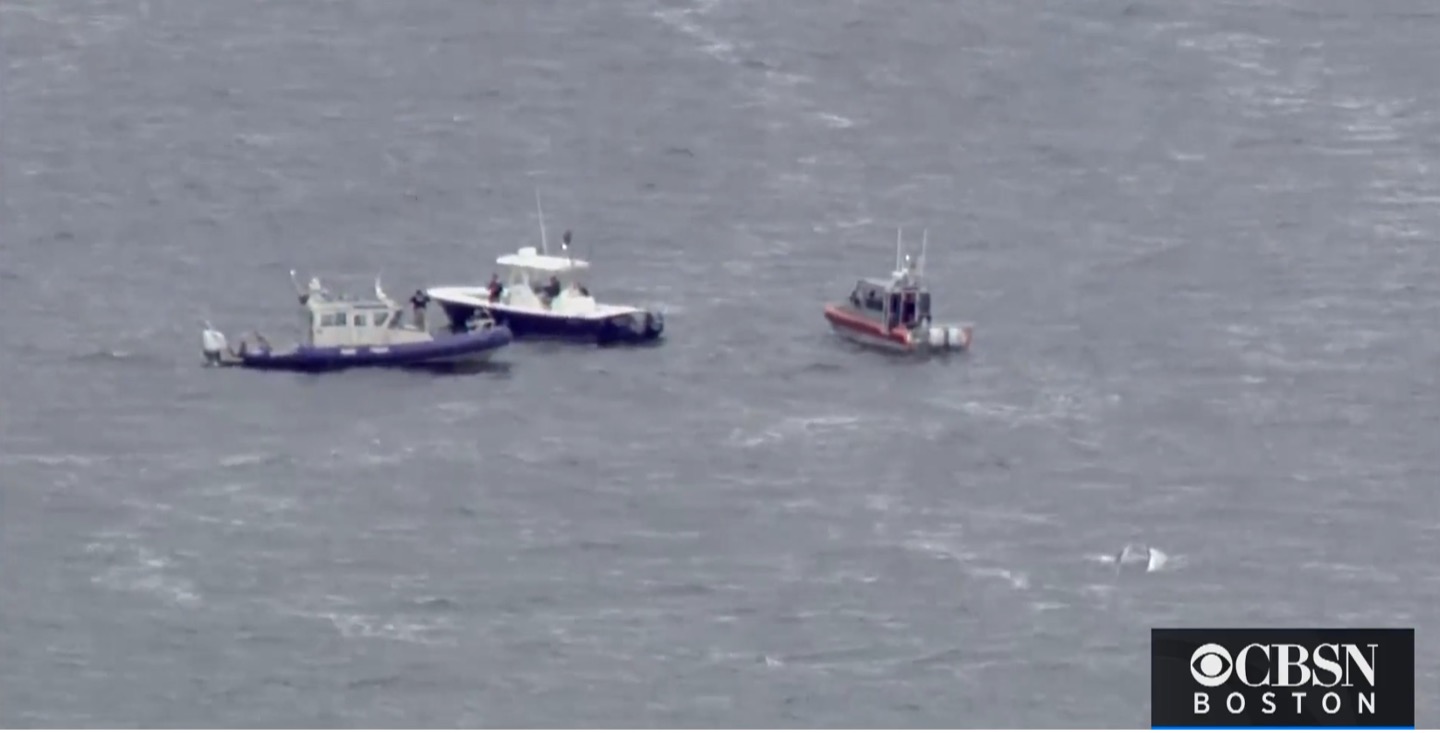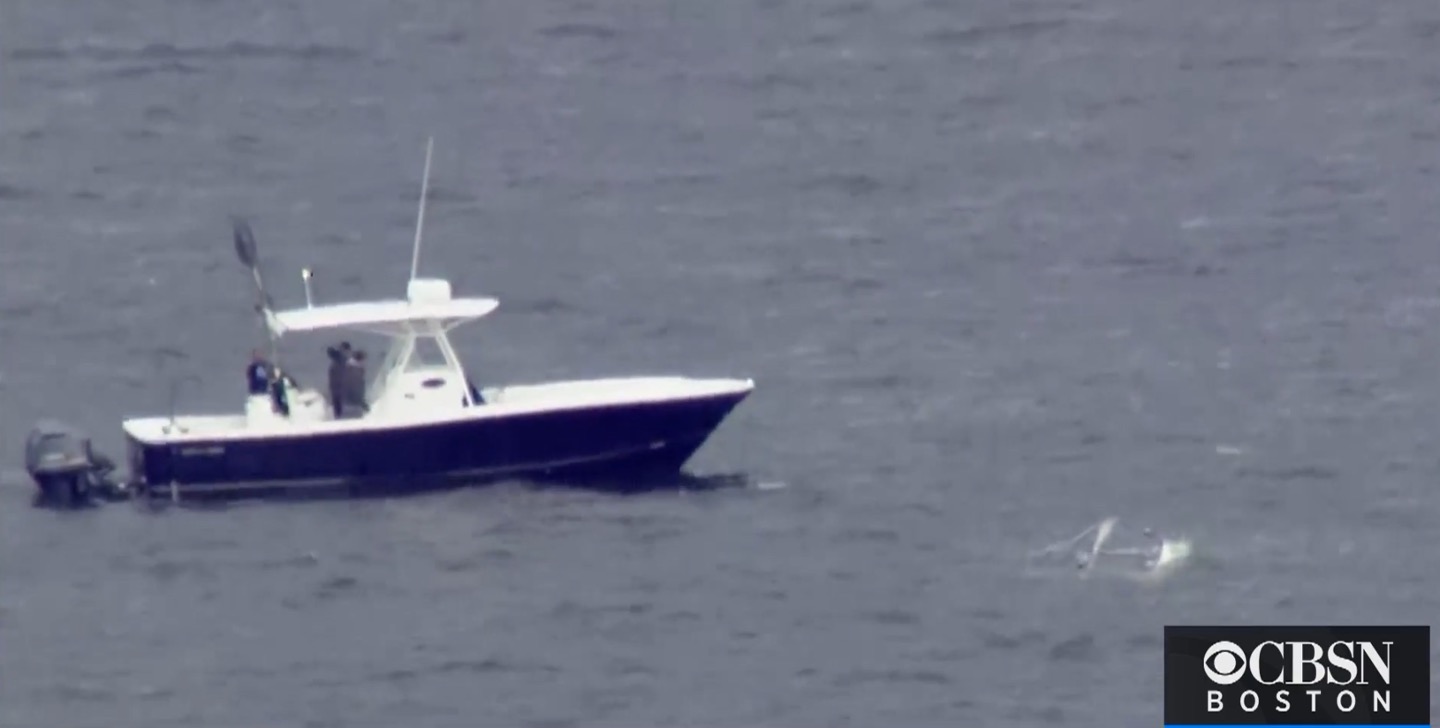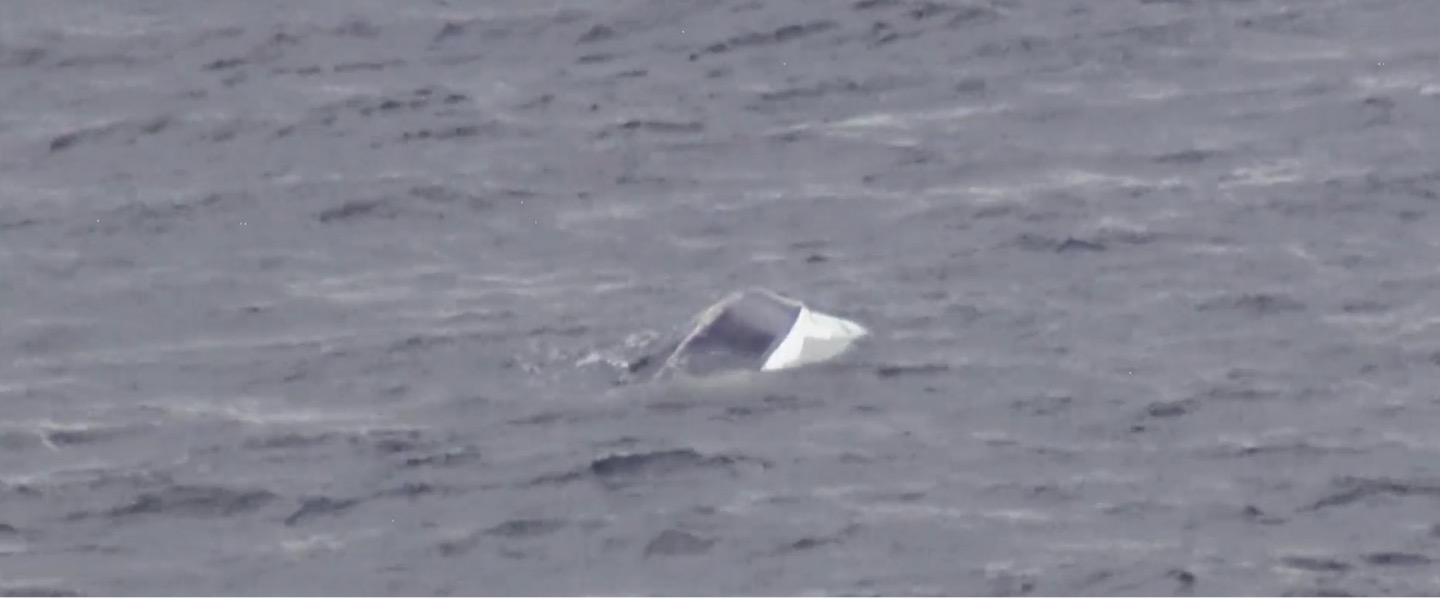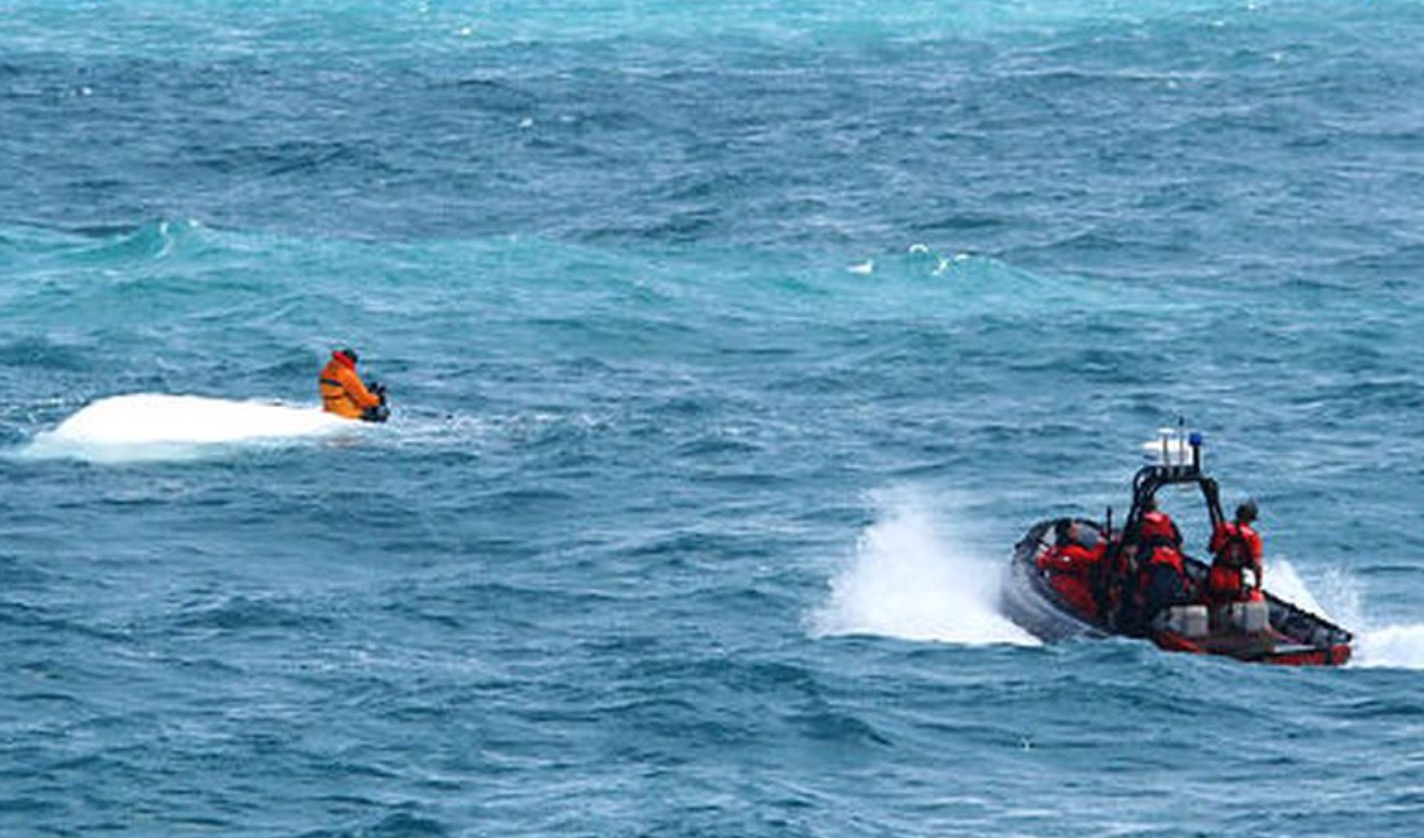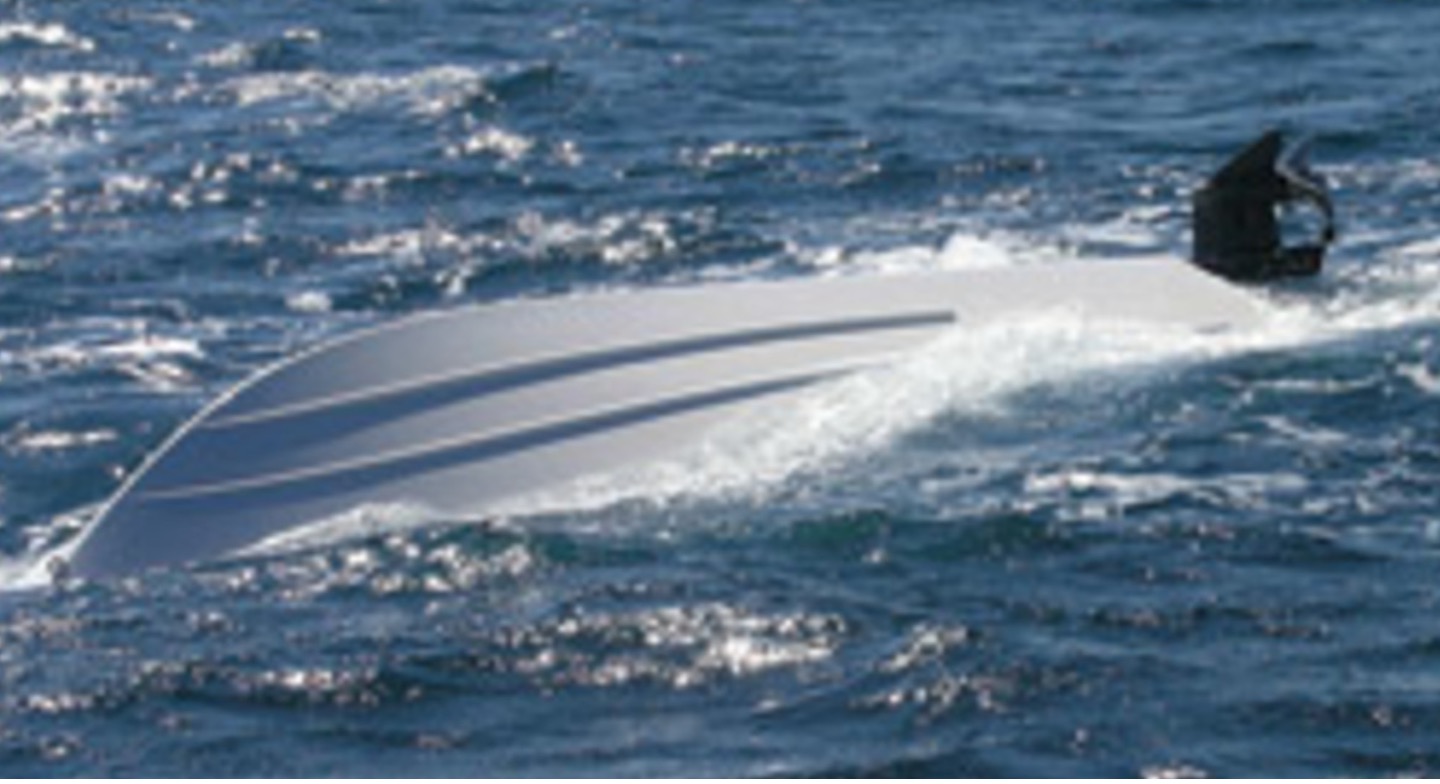Have You Ever Called 911 from the Water?
See BoatTEST’s Handheld VHF Buyer’s Guide here...
On Sept. 30, a lone 57-year-old man was in what was reported to be an 18’ (5.48 m) fiberglass boat that swamped and then quickly capsized. The boat was in choppy seas ½ mile off a beach near Boston, MA. The operator was wearing a PFD and was able to call 911 while floating in the water, asking for rescue. Have you ever called 911 from land, much less in the water? If so, you can imagine what happened – or didn’t happen – next.
As can be seen in the map above, the man’s boat was well in sight of land. While waiting in the water, he must have been able to see planes taking off and landing at nearby Logan airport, one of the busiest in the country. He reportedly tried to coordinate his rescue over cellphone. The water temperature was about 62-degrees F and hypothermia charts say that a person may die of this condition at that temperature in as little as two hours of immersion.
911 is Not Recommended
If you’ve ever had to call 911 for an emergency on land, you know that it can take 30 minutes or more to respond, whether it be an ambulance or a police squad car. Call 911 for the police at shift change and they may show up an hour and a half later, unapologetically. An ambulance, depending on the location, may be driven by volunteers which must be summoned, change clothes, drive to the station house, then drive to the rescue. And – all of this is in relatively populated locations.
Calling 911 is problematical for a water rescue. Let us tell you why:
- The local water police may be off duty when you need them.
- If they happen to be on duty at the time, water police may be far from the accident.
- Since you have communicated with a 911 operator there may be a snafu in communication with a first responder.
- Despite the fact that cell phones are required to transmit their location, the specific location may have changed after transmission because of tide and current.
And, one or more of those possibilities may have happened in the case of our hapless mariner. A first responder was recorded asking on channel 16 at which end of Yirrell Beach – which stretches for about two miles – where the capsized boat was said to be located. In the choppy seas, it was not easy to see a boat or man floating on the surface, but mostly underwater.
VHF Radio to the Rescue
At some point, one of the rescue boats used VHF channel 16 to broadcast that a man was in the water after his boat capsized. Now, everyone within VHF range is monitoring Ch. 16 because of a possible first responder. One boater responded quickly.
The occupants of the Good Samaritan boat spotted the survivor in the water and immediately drove over to lend assistance. They pulled him on board and put a blanket around him. It’s reported that shortly afterward the local first responder arrived. The harbormaster took the shivering man into his boat and turned the heat up in their pilothouse. He said that he didn’t think the man could have withstood the cold much longer.
When the man arrived at the town pier, the local EMS truck and crew were waiting. He survived.
“Level Flotation”
Federal law passed in 1977 and amended in 1999, requires that boats 20’ (6.09 m) and under with a 2-hp motor or more have “level flotation” – something that is defined in the statute cited below –
§ 183.335 Level flotation test without weights for persons capacity.
When the conditions prescribed in § 183.320 (a) and (d) through (g) are met, the boat must float in fresh, calm water as follows:
(a) The angle of heel does not exceed 10 degrees from the horizontal.
(b) Any point on either the forward or aft reference area is above the surface of the water.
(c) The reference depth at the reference area that is opposite the reference area that is above the surface of the water is 6" (15.24 cm) or less.
Whether or not the boat above meets federal building standards is a matter for the authorities to determine. Images and angles can be deceiving. What is clear, however, is that some boats float more level than others when swamped. Virtually all boats when swamped will capsize, or turn turtle. This is because of the free surface effect, and little can be done about that.
The images below were taken 11 years ago of a boat that was anchored by the stern, swamped and capsized 50 miles off the coast of Florida in the Gulf of Mexico. Of the four men aboard, three stayed in the water and died of hypothermia, and one (Nick Schuyler) clung to the bottom and the outboard lower unit and survived. They were out of cell range and did not have a VHF radio.
All four were former college or NFL football players. When they did not return home at night, their partners called the USCG which mounted a search covering 24,000 sq. mi. before Schuyler was spotted three days later and rescued.
